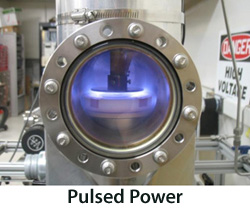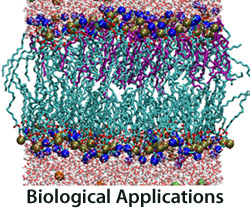Gundersen Lab: Pulsed power research for biophysical and medical applications

| Email: | mag@usc.edu |
| Office Location: | SSC 421 |
| Office Phone: | (213) 740 4396 |
| Lab Location: | SSC 423 / 316 |
| Lab Phone: | (213) 740 3036 / 4399 |
| Website: | Pulse Power Group |
| Ph.D. Programs: | Electrical Engineering / Physics and Astronomy |
My research group and I conduct basic and applied research in
- nanosecond to sub-nanosecond pulsed power generation
- bioelectrics and biophysics, including translational medical devices
- transient plasma, for energy, combustion, and biomedical applications
- education, through a novel approach involving popular media
- other areas; agriculture, wine production, and other applications of pulsed power
Nanosecond pulsed power, distinct from traditional power electronics, is an enabling element. By focussing on the applications of high peak-power, we employ nanosecond pulses to elicit non-equilibrium responses in widely-varying applications. The research addresses the underlying science of material responses to applied electric pulses in a new domain in which the pulses are too short for normal equilibrium dynamics to occur.
Specific potential benefits with broad impact include energy, through advancing low-emission, highly efficient combustion for a wide variety of engines, and bioelectrics, by selective induction of programmed cell death in diseased tissue.


Energy and combustion: basic understanding of the formative phase of plasma and its interactions with fuels, and the related challenge of understanding the complex interactions between non-equilibrium plasma and combustion chemistry will enable improved efficiencies for a wide range of engine technologies, and also reduce emissions, while having strong and powerful intellectual value for basic science. Non-equilibrium plasma in the transient, formative phase of an arc, applied to ignition and combustion (transient plasma ignition or TPI) has several advantages over conventional spark ignition used in most combustion applications. TPI has consistently demonstrated reductions in ignition delay, lean-burn capability, and the ability to ignite higher mass flow rates, resulting in improved efficiency and reduced emissions from a variety of airborne engines and internal combustion engines.
In transportation, technology developed for the field of combustion will have benefits that include the development of leaner burning engines, which will reduce emissions and provide an economic incentive for industrial investment. Industries that will benefit include automobile, automotive electronics, and engine manufacturers. Today, the U.S. consumes almost one million gallons of petroleum every minute of each day for the transport of people and goods. Combustion of fossil fuels results in air pollution, including nitrogen oxides (NOx) and carbon dioxide (CO2). The motivation for this research is to develop transient plasma ignition for improved combustion efficiencies and lowered emissions.
Bioelectrics: a basic understanding of the responses of biological cellular and intracellular processes to intense fields, using simulations at the level of molecular dynamics and extensive collaborative in vitro and in vivo studies, is opening a challenging research area of high intellectual value. In medicine, the technology developed and knowledge gained in the field of bioelectrics will have potential benefits that include the ability to selectively induce programmed cell death in diseased tissue relative to healthy tissue. This research will involve treatment of cancer using nanosecond pulsed power to activate intracellular processes through remote signaling and advancing pulsed power technologies integrated into medical systems.
A significant effort has already been dedicated to developing a system to deliver nanoelectropulses as a skin cancer therapy. For the initial application of cancer therapy, the technology has the potential to impact millions of patients who are diagnosed with squamous cell carcinoma, basal cell carcinoma, and other skin disorders. Success in this area will enable a transition into other forms of cancer therapy.
Education: This research has a novel approach to education. We are exploring the potential for transformative informal science education through film and television. This work fosters interactions between many different professional disciplines that exist in each of these two cultures. Goals of this informal educational project include creating deeper and different perceptions of science and engineering, as well as scientists and engineers, and improving the understanding of the roles of science and engineering in society.
Agriculture: the application of pulsed electric fields (PEF) has been demonstrated to increase juice yield and quality in white wine grapes in our experiments and in published literature. An electric field of moderate intensity (500-1000 V/cm), applied to the grape tissue causes an irreversible electroporation of the cell membranes, allowing selective extraction of cell components without thermally affecting the grapes. The turbidity and the content of solid particles also decrease, which positively impacts the quality of wine.

